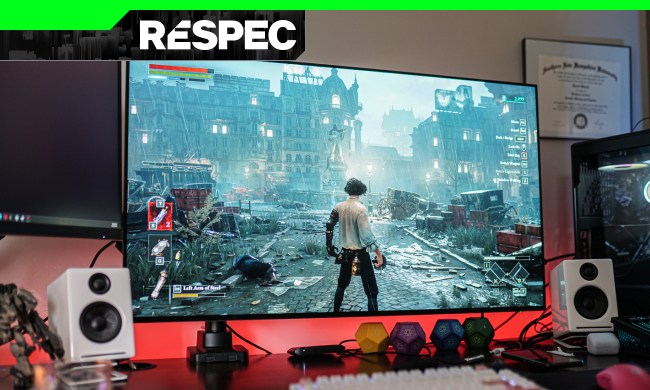Elden Ring doesn’t look great. It’s serviceable, but it’s a step backward in image quality compared to Sekiro: Shadows Die Twice and Dark Souls 3, at least to me. While I was playing, I kept thinking to myself: “Man, it would be nice if the developers patched ray tracing into the game.”
But then I realized I could do that myself.
Elden Ring prompted an adventure through ray tracing and its flimsy definition, the various ways games calculate lighting, and how Nvidia’s RTX games work on a technical level. I ended up adding ray tracing to several PC games, including Elden Ring. Here’s how I did it.
A ray tracing primer

Achieving ray tracing glory in a game that doesn’t support it isn’t easy. But thanks to a tool called ReShade, it is possible.
How, you ask? Well, the thing to remember is that ray tracing is a technique, not a feature. Nvidia’s RTX ray tracing has led the charge on defining what it is, which is what some may refer to as proper ray tracing. In short, RTX ray tracing traces rays of light out from each light source in a scene, regardless of what you can currently see on screen.
What I’m talking about adding myself is sometimes called “ray marching,” and it should be said: Calling the gray area between it and ray tracing ambiguous would be an understatement. Instead of going through the painstaking process of determining how each ray interacts with objects for the entire scene, ray marching uses a depth map to shoot rays out (or have them march forward) to determine lighting characteristics. You can see an example of a depth map, which just shows how far or close objects are to the camera, below.

There’s a lot of technical detail here, but here’s what’s important: Ray tracing is attempting to simulate lifelike lighting no matter how demanding of a process that is, while ray marching is only concerned with what you can currently see on screen. Both are ray tracing in that they’re calculating how rays of light bounce off of objects, but they’re going about it in very different ways.
All of that explanation is critical to understanding that ray tracing has different uses. Undoubtedly, most people think of ray tracing as reflections, but it has far more applications. Ray tracing also touches shadows, ambient occlusion, global illumination, and basically any other technique that has to do with lighting and shadows.
That brings us back to Pascal “Marty McFly” Gilcher’s RTGI ReShade shader. It’s a shader that handles ray-traced global illumination through a tool called ReShade, which is basically a middleman that modifies instructions from the game before they reach the graphics driver. It’s not “real” ray tracing as you’d find from an RTX-enabled game, but it’s using ray tracing as a technique to offer more realistic lighting and shadows in games that aren’t properly supported.
Gilcher offers the RTGI shader through Patreon for $5 per month, but it’s also available on Nvidia graphics cards (the SSRTGI, or screen space ray-traced global illumination, filter in GeForce Experience) for free. I subscribed to show some support, and I immediately took the shader out for a spin in some of my favorite games.
But then I realized how in-depth of a process getting it working would be.
A test of patience

Once I had the RTGI shader in hand, I had to install ReShade. I’ve used ReShade before, and if you’re interested in modifying the look of your games, it’s worth learning. The first step was getting ReShade and the RTGI shader installed for each game I wanted to test. You have to do them one at a time.
Configuring ReShade is easy enough thanks to a quick tutorial it runs whenever you launch it for the first time. I switched on the shader in Elden Ring for the first time, and it didn’t do anything. I did a little extra research, but I couldn’t find out why, so I shelved this idea for a bit.
My issue, and one I encountered in nearly every game I tested, came from the depth map. This is the most important thing for the RTGI shader, as it uses the depth map to determine how to simulate the lighting. Games use a different approach, so in some cases, they wouldn’t pull the depth map at all, while in others, they would flip the map so objects close to the camera rendered like they were far away and vice versa.
RTGI provides tools to combat these issues, but they’re not exactly user-friendly. In games like Assassin’s Creed Odyssey, I had to invert the depth map using RTGI, and in games like Batman Arkham City, I had to how far the depth map reached into the scene. There isn’t a one-size-fits-all solution, but after a bit of practice, I was quickly able to adjust the depth map to achieve the results I wanted.

That’s the main thing to worry about to achieve a realistic result, but I encountered at least a dozen other hurdles. Halos around objects, harsh and unattractive light spill, and strange interactions with shadows cropped up several times. And in some games, like Half-Life 2, the shader just didn’t look right no matter what I did.
If you want to get started with RTGI, here are a few pointers to get you on the right path:
- Always enable the DisplayDepth shader in ReShade after you turn on RTGI. You need it to see if your depth map is showing up correctly, but you can turn it off afterward.
- Disable anti-aliasing in-game. You can handle anti-aliasing through ReShade, and it can mess with the depth map for RTGI.
- RTGI provides global settings for the shader. They’re explained in the DisplayDepth interface, and you need to adjust them based off of what you see in the depth map.
- In the Add-Ons tab of ReShade, make sure to select your depth map. You’ll see a list of maps on the bottom, and they’re very confusing. You’re looking for the one that has a resolution that matches your display.
- RTGI can cause color issues on its own, so make sure to use the curves or levels tool to adjust the look of the game afterward.
- RTGI includes several settings at the bottom of the interface (infinite bounces for rays, material-based lighting, etc). You’ll probably need to turn on at least a few of these features for the best results.
RTGI requires a lot of patience and experimentation, so don’t pick it up for a one-click solution. I’m not going to use it every game, but in titles like Elden Ring that I want to play a lot, the results are great.
The results

That’s enough technobabble for a week — maybe a month, or even a year. It’s time to see what RTGI can do in action. I applied it to 10 games, but I came away with five that I liked the look of: Assassin’s Creed Odyssey, Batman Arkham City, Hitman 3, Metro 2033 Redux, and of course, Elden Ring.
Here are the screenshots:
RTGI isn’t doing all of the work on its own. As mentioned, it’s a good idea to add a levels or curves adjustment after RTGI to balance out anything weird it’s doing. I had to do that in every game, and like RTGI, it’s a process of trial and error.
But I still love the depth that RTGI brings. In Elden Ring, it’s how the back of the shield is properly shadowed. In Hitman 3, it’s the contact shadows of Agent 47’s coat and the bloom from bright lights that spill out onto other surfaces. RTGI doesn’t overhaul games; it just enhances them.
Was it worth it?

No. For the vast majority of gamers, fussing around with ReShade and RTGI isn’t worth it at all. I did it because I’m a geek and I love computer graphics, and I was still frustrated multiple times during the process.
If you have a game that you want to up the look of, and you plan on dedicating a lot of time to it, RTGI is a solution. It’s not essential, but if you’re into modding PC games, RTGI provides plenty of fodder to toy around with. And the results are great, given that you spend some time getting your settings right.
I won’t use RTGI in every game, or even most of them. But in select single-player titles — using RTGI or any ReShade filter in a multiplayer game is a swift way to earn a ban — I’ll use it again.




